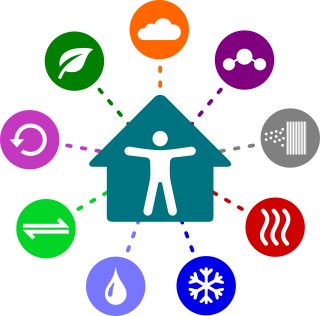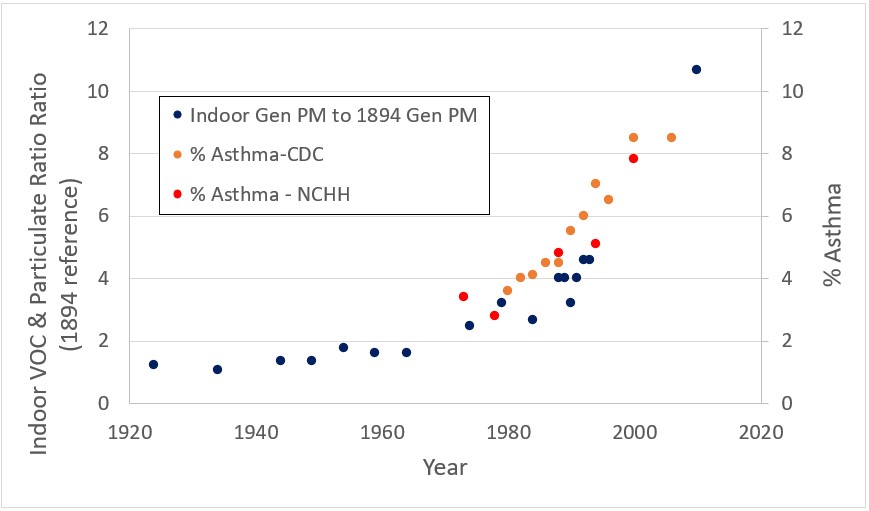Join Us at PHIUScon (October 14 and 15, 2021) for Ty’s presentation discussing why we should separate and elevate indoor environmental design from its underdog status in the world of building design.
Maintaining a healthy and comfortable indoor environment is complex. Those who are familiar with Build Equinox already know we consider today’s ASHRAE 62.1 and 62.2 odor-based ventilation standards as unhealthy and unacceptable. But why? And what is the cost of maintaining an exceptional indoor environment in every building you enter?
Attend PHIUScon 2021 in Tarrytown New York on October 14 and 15, 2021 to hear Ty discuss these topics and more. You may be surprised to learn that our advocacy for more than doubling today’s ventilation standards requires less energy than today’s inadequate ventilation standards while improving our health, comfort, and productivity.
Nobel Laureate Richard Feynman noted that F=ma is all you need to know in physics, but, you must know it very, very well. Building ventilation fundamentals are similarly based on simple principles: fresh air, air filtration, and air sanitation. Effective, efficient implementation of these principles require more than wishful thinking and simply checking boxes on certification forms. Correlation of our deteriorating health and increased building energy efficiency is no accident, as shown in the attached plot of increasing asthma prevalence.
The good news is that the tide is turning as more people recognize that indoor air quality should no longer be sacrificed in order to “save” energy when designing our homes, schools, churches, offices, restaurants, or any building. Listen to Harvard’s Professor Joseph Allen on a recent NPR “Here and Now” broadcast discussing how decades of deficient buildings over the past several decades have impacted our health and our ability to fight today’s pandemic, and you will hear our message echoed by others who also understand what we must do to improve our health in the built environment.
Human centric design of our indoor environments means that every building we enter has an amount of fresh, filtered air that keeps carbon dioxide and chemical concentrations low, recirculates and filters indoor air to keep particulates low, and includes comfort systems capable of providing temperature and humidity as we prefer in any space and time of day. With a cost of only 1 to 2 pennies per hour per person for energy, every person deserves healthy and comfortable conditions!
Trends in asthma prevalence and relative increase of indoor pollutants (referenced to house air leakage in 1894). Note that the character of today’s indoor pollutants has changed over the years as we have immersed ourselves in more and more human-made chemicals. Figure from “New Indoor Air Quality Standards Based on Cognition, Health, Sleep, and Productivity” presentation at Efficiency Vermont’s “Better Buildings by Design” conference, February 1&2, 2017.
Data Sources:
1. M.Sherman, D Dickerhoff, “Air Tightness of U.S. Dwellings”, ASHRAE Transactions, Jan 1998
2. L.J.Akimbami, “The State of Childhood Asthma; 1980-2005”, Advance Data from Vital and Health Statistics, No 381, CDC, US Dept of Health and Human Services, Dec 2006
3. D.E. Jacobs, J.Wilson, S.L. Dixon, J. Smith, and A. Evens, “The Relationship of Housing and Population Health: A 30-Year Retrospective Analysis”, Environmental Health Perspectives, Vol 117, No 4, April 2009
4. N.E.Klepeis, W.C. Nelson, W.R. Ott, J.P. Robinson, A.M. Tsang, P.Switzer, J.V. Behar, S.C. Hern, W.H. Engelmann, “The National Human Activity Pattern Survey (NHAPS): a resource for assessing exposure to environmental pollutants”, J Exposure Analysis and Environmental Epidemiology, Vol 11, pp231-252, 2001


























